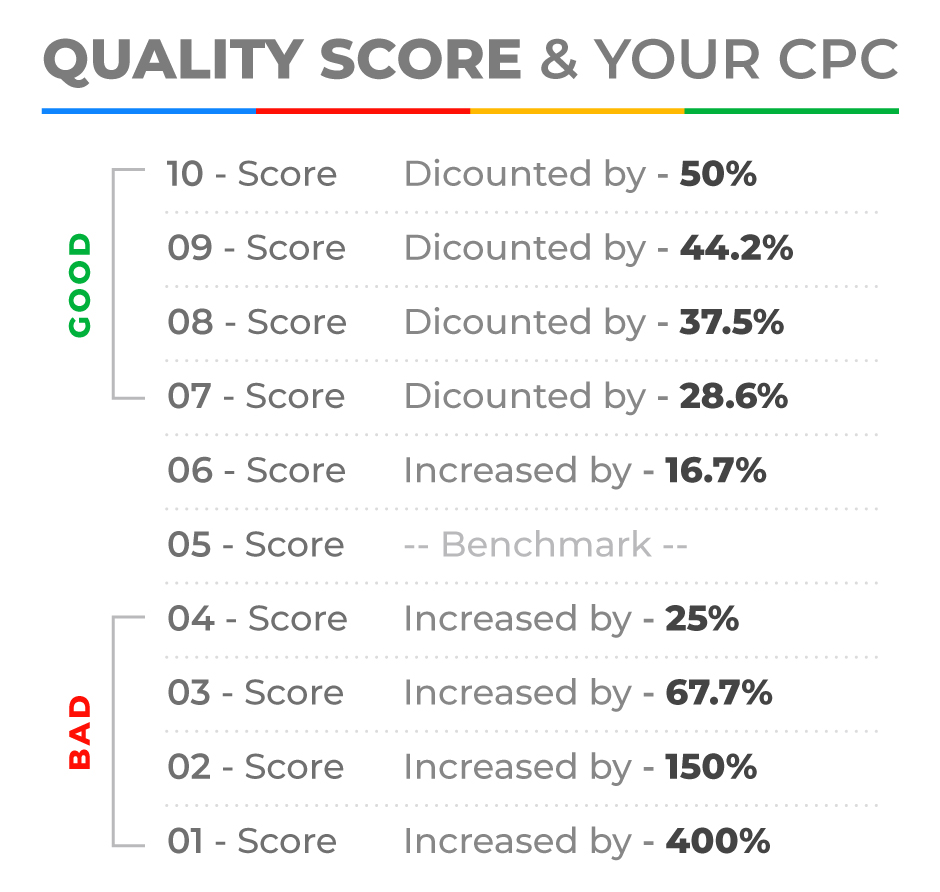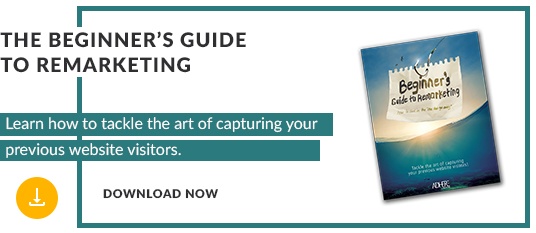 Justin Golden
Justin Golden
What If I Told You You Could Lower Your Average Cost-Per-Click without Adjusting Bids, Strategy, Or Budget? Sounds too good to be true, but hear me out…
There are a lot of tactics, tricks, and guru insights for optimizing a Google Ad search campaign. Most of this advice focuses on strategy: bidding, audience targeting, remarketing, etc. These are all well deserved in the conversation of campaign optimization, but there's something often overlooked that will significantly influence your success with Google Ads. Something so fundamental it affects how often your ads appear and how much you pay when they do. Focusing on improving this one thing can turn an underperforming campaign around and should be a top priority when building any new campaigns.
What is a Quality Score?
In Google’s own words, Quality Score is “like a warning light for a car’s engine that shows how healthy your ads and keywords are.” Sounds important, right? It is! The Quality Score is reported on a 1-10 scale and includes expected clickthrough rate, ad relevance, and landing page experience. Summary: this one metric is tied to some of your most important KPIs and can’t be ignored if you’re using Google Ads.

Higher quality ads can lower your average cost-per-click and improve ad positions. It’s estimated that for every point increase in quality score you can expect a 9% increase in impression share, and according to a study by WordStream, Quality Score can either discount or increase what you pay.
So there it is, the king of Google Ad KPIs. If you could discount your cost by 50% you could double your traffic using the same budget. Of course, attaining a Quality Score of 10 for every keyword is unrealistic. Attaining a 6 or higher for all keywords is completely doable, and that should be your goal for every Ad Group. If your Quality Scores are below a 5, Google views your ads as less relevant than the competition. Ouch. You're paying the price by lost impressions and paying a higher cost-per-click.
A low Quality Score is indicative of a disconnect between your campaign's structure and the user's intent.
When developing your google ad campaign, keep these tips in mind:
- Relevance to the user’s intentions is the primary factor to consider when evaluating your campaign. Do your keywords, ad copy, and landing page align with the user's search query?
- Your landing page should also be relevant to the user's search query.
- Using mobile-friendly ads and pages improve the user's experience and the chance for higher Quality Scores.
How to improve Your Quality Scores
Add New Keywords: Using the Keyword Planning Tool under “Tools and Settings” is a great place to start. This tool allows you to discover new keywords and forecast search volume. If you’ve run Google Ads for more than 90 days, my favorite place to look for new keywords is your Search Term report. This report, found under the Keyword Tab, will show you exactly what some users typed into the search bar. You’ll be surprised at how people search for your products and services! (Note, if you’re using exact match keywords it won’t be as powerful.) You can also do research using tools like SEMrush.com to see what keywords you rank high or low for and even what your competition ranks for. These can make for relevant keywords if used properly.
Keyword Organization: Make sure relevant keywords to a specific product or service are kept in their own ad group or campaign. If you are advertising a quick service restaurant offering lunch specials, don’t put all of your menu items in one ad group. Break the keywords up and have an ad group for sandwiches, salads, soups, etc. This will improve the relevance of your ad and allow for specific ad copy for each item. Speaking of which...
Ad Copy: Now that you’ve discovered new and relevant keywords and segmented them into their own ad groups, you can use targeted ad copy to improve your ads relevance. Good ad copy plays on the emotions of the user but also attempts to answer the user’s question.
Our Takeaway
The more relevant your ads and landing pages are to the user, the more likely it is that you'll see higher Quality Scores. Quality Scores are the king of Google Ads KPIs, influencing impressions, cost, CTR, and conversions. Create campaigns with a clear objective and focus on relevancy when selecting landing pages, ad copy, and keywords.
The debate for how important Quality Score is to Google Ads has been around for a long time. Some argue it's not as important as it seems, as your Quality Score is not used to determine Ad Rank at auction time. While this is true it doesn't mean you aren't wasting valuable ad dollars by overpaying, bidding on the wrong keywords, or serving irrelevant ads.
What could higher Quality Scores do for your campaign? If you're already running Google Ads and would like a free audit, contact us today!

